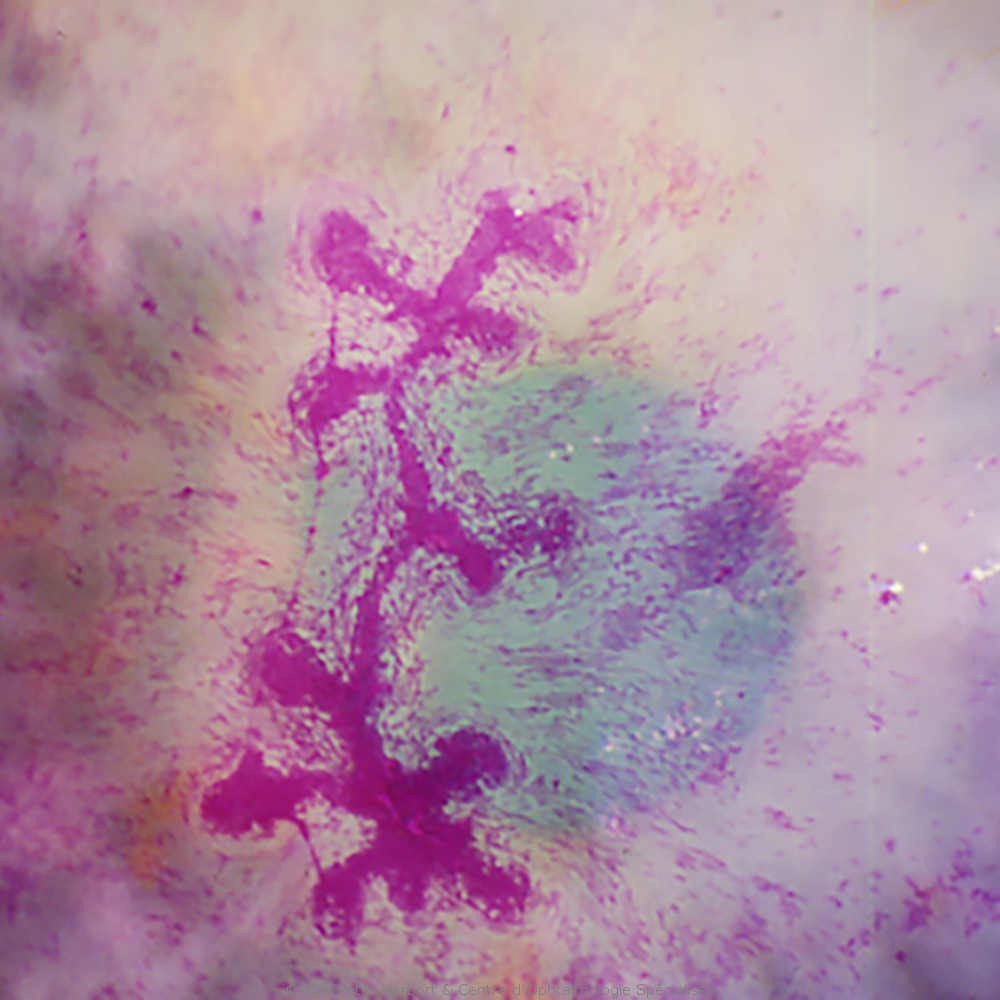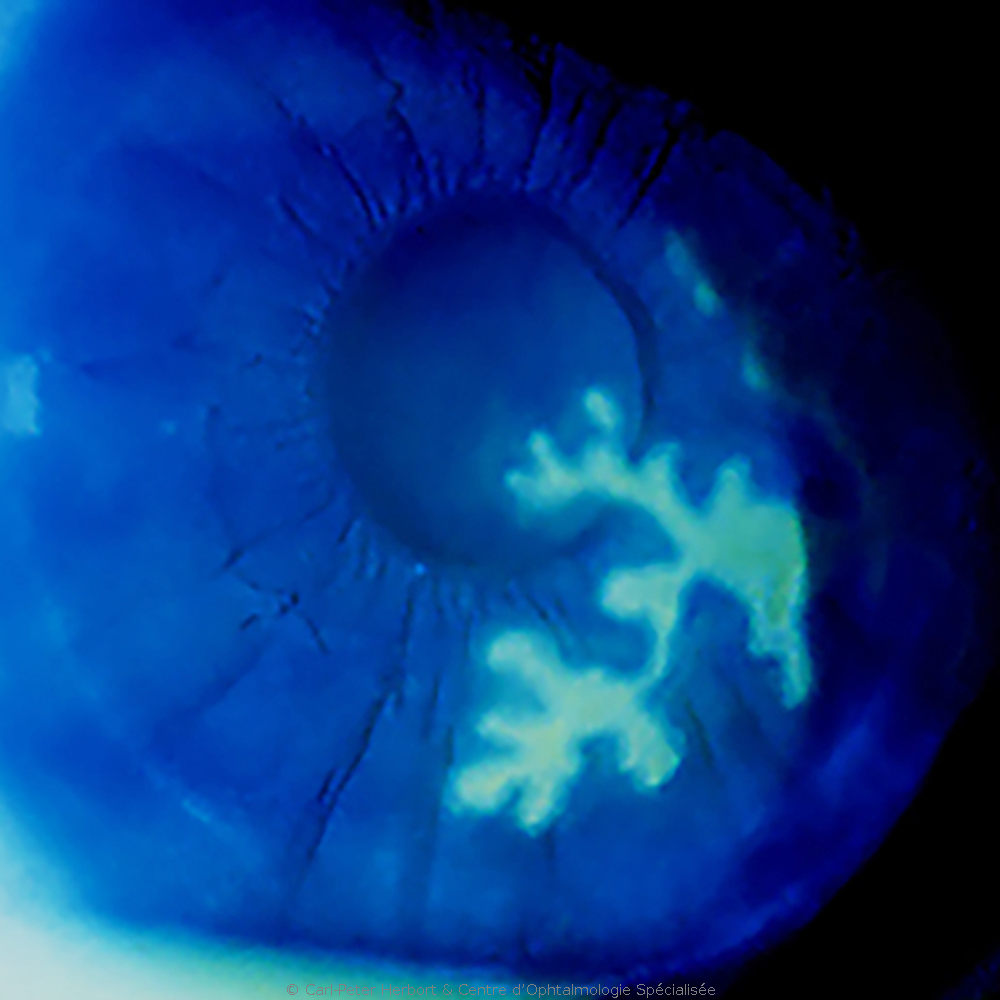Herpes simplex keratitis
Herpetic (dendritic) keratitis is an infection of the cornea caused by the virus Herpes Simplex type 1. Most of the time the infection is not caused by a direct infection but by the reactivation of a virus that is already present in the body following a primoinfection (often without clinical manifestation) in another part of the body such as the lips. The virus stays in a latent inactive form in the nerve ganglion. Indeed, at age 20 more than 95% of individuals have antibodies against the virus, meaning that they have been infected, mostly without noticing it (subclinical infection). The virus can reactivate when the immune system is even slightly impaired, becomes active and replicates and travels down in the nerve fibres of certain neurons. Often, such a reactivation occurs during an episode of fever or after exposure to ultraviolet light, such as intense and/or prolonged exposure to sunlight. Most of the time, reactivations occur around the lips (labial herpes) but such a reactivation can sometimes involve the cornea.


The clinical image then takes a peculiar aspect called a “dendrite”, characterised by complex branching lesions on the surface of the cornea (the epithelium). The diseased areas can be coloured by vital dyes such as fluorescein or rose bengale. (figures 1 & 2) Since more than 40 years we dispose of efficient antiviral therapies that can be given locally/topically or sometimes need to be given orally. The most often used substance is acyclovir. When given orally the substance used today is valacyclovir which has a better absorption than acyclovir. In this superficial form of herpes infection, the use of corticosteroid drops has to be absolutely avoided, as it favours the growth of the virus and can have devastating effect allowing the infection to propagate and produce large ulcers. After successful antiviral therapy, sometimes opacities develop under the epithelial area that was infected (nummular scars), it is sometimes necessary to give very low dosed corticosteroid drops in order to avoid these opacities.
